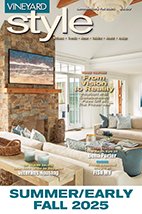ON ISLAND

BioDiversityWorks
Islanders Who Engage in Hands-On Nature Study
By Matt Pelikan
Conservation organizations exist to speak on behalf of the natural world. But what, exactly, does nature want to say? BiodiversityWorks – “BWorks” to its staff and friends – was founded in 2011 by wildlife biologists Luanne Johnson and Liz Olson precisely to answer this surprisingly complicated question.
The natural world is an intricate web of interdependencies, and human perceptions easily oversimplify or misread what is actually happening. Effective conservation, then, begins with the humility and patience to let nature do the teaching. That’s the principle that has guided this small but potent organization since its founding.
“From the beginning, we’ve focused on gathering baseline data on keystone species across the island to inform current and future management to conserve them,” says BWorks Director Luanne Johnson.
A good example is a study of black racers begun in 2014. These harmless but impressive snakes – a large one may approach six feet in length – live mainly on a diet of rodents. Declining statewide, the black racer is prioritized for conservation by the Massachusetts Wildlife Action Plan. Once common and widespread on the Vineyard, black racers have been decimated in recent decades and are now restricted to a few large, unbroken tracts of habitat along the south shore.
Reports from the community helped BWorks assess the Island population and identify the few remaining strongholds for this snake. Four black racers were captured, taken to veterinarian Michelle Jasney to receive tiny radio transmitter implants, and released back at their capture site. Over the course of the next year, BWorks tracked the movements of each snake, after which the transmitters were removed. The data collected revealed complex movement across very large areas, as the snakes moved among wintering and nesting sites and foraging areas.
Racers lose a lot of their eggs to skunks and raccoons, but the source of mortality that is easiest to address may be road kill: many racers are run over as they bask on roads or cross them. This spring, this patient research culminated in a large-scale conservation response. With assistance from The Trustees of Reservations and funding through MassWildlife, two hibernacula (underground sites for hibernation) were installed at Long Point Wildlife Refuge, along with a road underpass and drift fence designed to allow racers to make their necessary long-distance movements without exposing themselves to risk on roads.
Other projects, similar in ambition and scope and involving different but equally ingenious methods, have looked at the local biology of river otters, spotted turtles (another reptile at risk of extirpation on the Vineyard), and northern long-eared bats, their population gutted by a cold-loving fungal infection known as white nose syndrome.
A beach-nesting bird conservation program manages and protects threatened piping plovers, oystercatchers, terns, and black skimmers nesting on beaches around the island, funded by grants and contracts. Each of these projects (and more that there isn’t room to list!) has gone straight to the real experts – that is, the wild animals themselves – to learn what at-risk species need to survive and to develop innovative approaches that secure those needs. “Each project brings surprises and more questions,” says BWorks Assistant Director Liz Olson. “Sometimes our search for local answers even contributes to knowledge of a species on the national level.”
The patient field work and data analysis that makes these studies successful requires specialized training. So, to build a community of skilled practitioners, BWorks runs an energetic mentoring and seasonal staffing effort. Young biologists and naturalists, from the Vineyard or the mainland, join the professional BWorks staff for a summer of hands-on field work and training. About 25 young conservation biologists have carried their BWorks experience into the future.
Finally, effective conservation requires public engagement and support from the community. Toward that end, BWorks teamed up in 2021 with the Village and Wilderness Project, supported by the Vineyard Vision Fellowship program, to launch Natural Neighbors. Working with interested private property owners, Natural Neighbors offers practical, customized guidance at no cost for improving conditions for plants and wildlife. The program works annually with Polly Hill Arboretum to make local-genotype native plants available to homeowners seeking to increase plant diversity in their yards.
Always collaborative, BWorks partnered with the Betsy and Jesse Fink Family Foundation in 2021 to enlist the Vineyard community in documenting the unique biodiversity of the Island. Through webinars, in-person programs, and a website launched in July 2022, the Martha’s Vineyard Atlas of Life program offers inspiration and support for anyone interested in studying or appreciating the distinctive mix of plants and animals occupying the Island’s unusual habitats.
Martha’s Vineyard is blessed with many effective conservation organizations, each with its own priorities and approaches. BiodiversityWorks isn’t the largest one. But it may well be the most innovative and determined, and its unflagging focus on wildlife biology is unique.
You can learn more about BWorks and its array of projects at: biodiversityworksmv.org. The MV Atlas of Life Project, with a wealth of checklists and other resources for naturalists, is at: mval.biodiversityworksmv.org.








